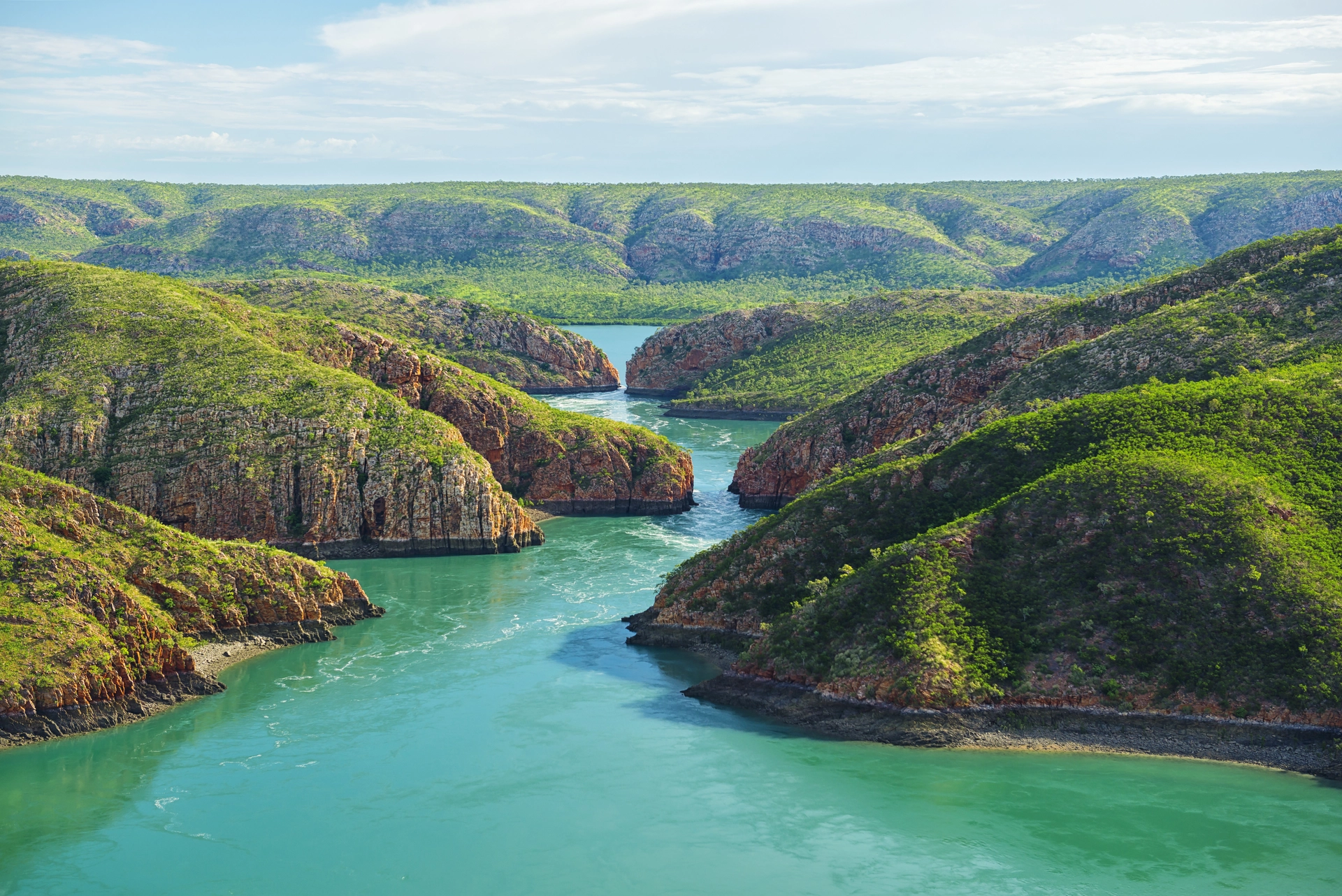

The Formation of Horizontal Falls
Horizontal Falls are not your typical waterfalls—they don’t plunge from great heights, but rather flow horizontally through narrow coastal gorges. The key to understanding their formation lies in the region’s unique tidal dynamics and geological features.
Tidal Forces
The Kimberley region experiences some of the largest tidal variations in the world, with tides rising and falling by several metres. These powerful tides play a crucial role in the creation of the Horizontal Falls. As the tide changes, water from the ocean is forced through narrow channels and gorges, resulting in rapid and powerful horizontal flows.
Geological Features
The geography of the Kimberley coast contributes significantly to the formation of the Horizontal Falls. The coastline is characterized by rugged terrain with numerous islands, channels, and cliffs. The tidal waters must navigate through these narrow channels, creating intense currents and water compression, ultimately leading to the spectacular sideways flow that defines the Horizontal Falls.

Hydrodynamic Forces at Play
Understanding the hydrodynamics behind Horizontal Falls involves considering the principles of fluid dynamics and the impact of tidal energy. The movement of water through the channels generates strong currents, creating a phenomenon known as a tidal rapid. The rapid flow, combined with the confined space of the gorges, results in a unique horizontal waterfall effect.
The Venturi Effect
The Venturi effect, a principle of fluid dynamics, comes into play as water passes through narrow constrictions in the landscape. As the channel narrows, the water velocity increases, creating a drop in pressure. This drop in pressure contributes to the distinctive horizontal flow as water rushes through the constricted passages, creating the illusion of a waterfall oriented parallel to the Earth’s surface.
Compression and Expansion
As tidal waters move through the channels, they experience compression and expansion due to the changing width of the gorges. The compression increases water velocity, leading to the powerful horizontal flow characteristic of Horizontal Falls. The expansion, on the other hand, results in a temporary easing of the current, creating a mesmerizing ebb and flow within the gorges.
Horizontal Falls stand as a testament to the intricate interplay of geological forces and tidal dynamics. This natural phenomenon serves as a reminder of the incredible diversity and complexity of our planet’s landscapes. As scientists continue to study and unravel the mysteries of the Horizontal Falls, the appreciation for the forces shaping our world deepens, fostering a greater understanding of the beauty inherent in the natural world.

Sign up below to receive our e-newsletters featuring the latest news, exclusive offers and much more from Journey Beyond and Horizontal Falls Seaplane Adventures.